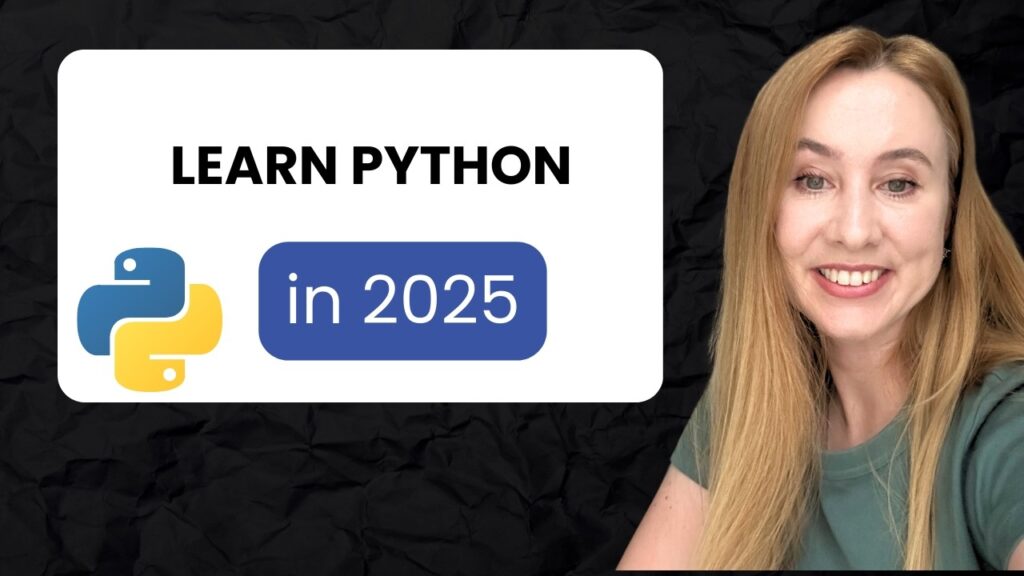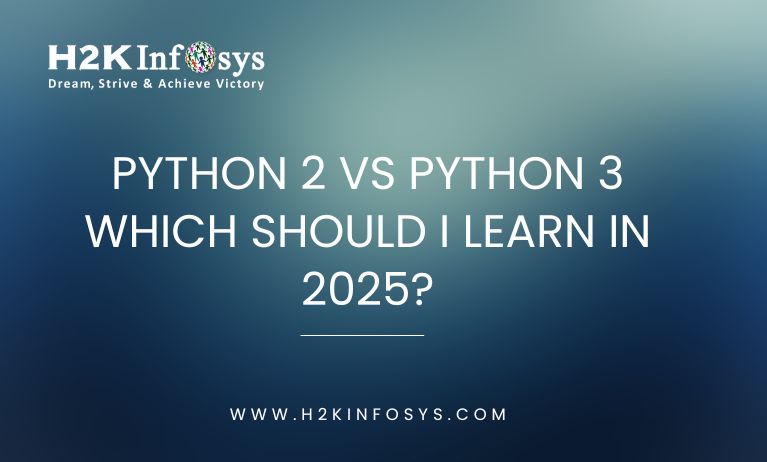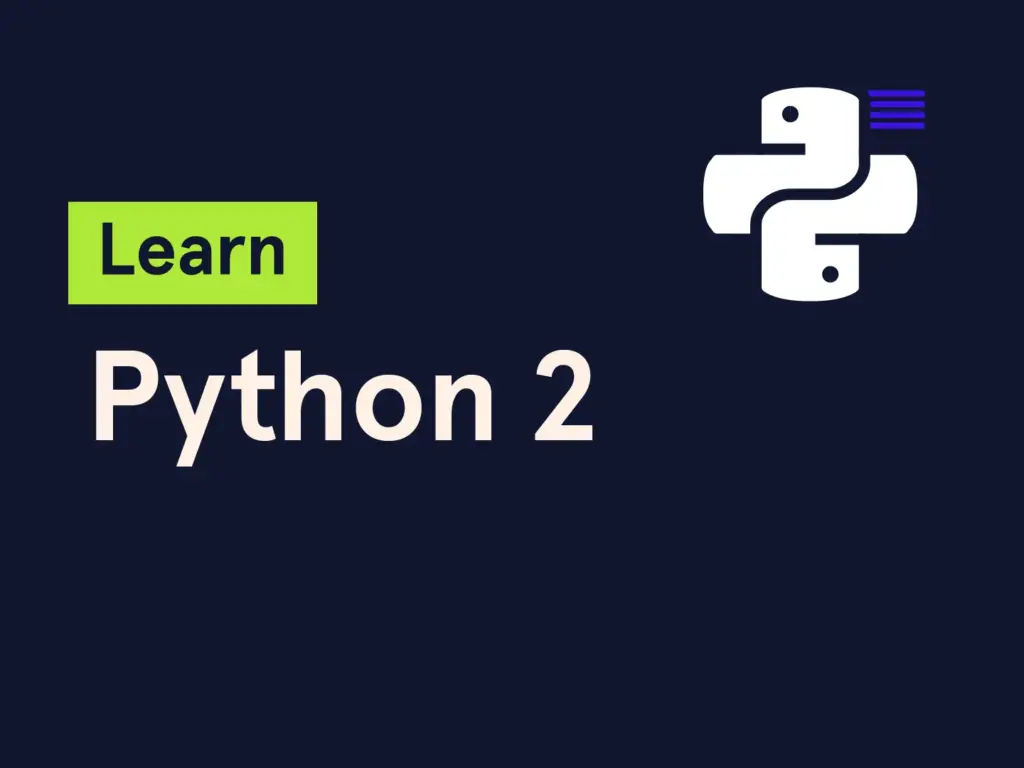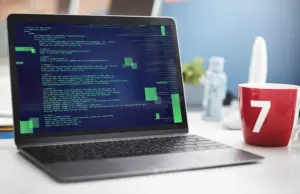Introduction
In the world of programming, Python stands tall as one of the most widely used and versatile languages. Whether you’re a novice programmer or an experienced developer, deciding which version of Python to learn can be challenging. Should you focus on Python 2 vs Python 3? This decision is crucial as it impacts your learning curve, job opportunities, and future career trajectory.
In this blog post, we’ll delve deep into the differences between Python 2 vs Python 3, and explore why learning Python 3 in 2025 is a smarter choice for aspiring developers. Additionally, we’ll guide you on how to get started with Online class for python, certification, and tips for a successful learning journey.
Let’s explore Python 2 vs Python 3, and help you make an informed decision.
Python 2 vs Python 3: A Brief Overview
When discussing Python 2 vs Python 3, it’s important to understand that Python 3 was introduced as a major upgrade to Python 2. Python 2 was widely used for many years, but it contained certain design flaws that limited its potential. Python 2 vs Python 3 is no longer a matter of choice for new developers, as Python 3 is now the industry standard, offering better performance, more features, and a more streamlined syntax.
Python 2
Python 2 has been around for nearly two decades, with its first release in 2000. During this period, Python 2 played a significant role in shaping the way we approach programming today. It became one of the most popular languages for web development, data analysis, and system automation. However, as technology advanced, Python 2 began to show limitations, which led to the development of Python 3.
In 2020, after extensive planning and community discussions, the Python Software Foundation (PSF) officially ended support for Python 2, urging developers to make the transition to Python 3. This shift was inevitable as Python 3 introduced essential improvements, and continuing to support two versions became increasingly inefficient. Python 2 reached its end-of-life (EOL) status, meaning no more updates, bug fixes, or security patches would be released for it, making Python 2 an obsolete choice for new projects and learners.
As we delve deeper into the topic of Python 2 vs Python 3, it becomes evident that Python 3 is the clear winner for any aspiring programmer in 2025. The transition to Python 3 was not a simple upgrade but rather a comprehensive overhaul of the language, designed to fix flaws and make the language more efficient, readable, and future-proof. Python 2 vs Python 3 is no longer a debate for developers who want to keep up with modern practices, and making the switch is crucial for anyone starting their programming journey now. In this comparison of Python 2 vs Python 3, we will explore the key differences and why Python 3 is the version to focus on.
Python 3
Python 3, introduced in 2008, was a major overhaul of Python 2, marking a significant turning point in the evolution of the language. It was specifically designed to address the inherent design flaws that were present in Python 2, providing a more streamlined, efficient, and modern approach to programming. One of the key goals behind Python 3 was to improve readability, making it easier for both beginners and experienced developers to write and maintain code. With its clean and consistent syntax, Python 3 allows developers to focus more on problem-solving and less on dealing with the language’s quirks.
In addition to enhanced readability, Python 3 provided better functionality, especially in handling data types, error management, and string encoding. These improvements made Python 3 a more powerful tool for building applications, handling large datasets, and integrating with various technologies. Over the years, Python 3 has gained immense popularity and has become the preferred version for new development projects. It is now the go-to choice for industries ranging from web development and automation to data science and machine learning.

When comparing Python 2 vs Python 3, it becomes clear that Python 3’s advancements in performance, security, and feature richness make it a more attractive option for developers today. While Python 2 vs Python 3 has been a topic of debate for years, the community has largely embraced Python 3, ensuring that most libraries, frameworks, and tools are optimized for the newer version. If you’re deciding between Python 2 vs Python 3, Python 3 is undoubtedly the version that will future-proof your programming career..
If you’re wondering, “Which version should I learn in 2025?” the simple answer is: Python 3.
Why Python 3 is the Future of Programming
1. Official End of Life for Python 2
In 2025, Python 2 will be far behind in terms of updates, features, and security. The final Python 2.7 release occurred in 2020, and as the world advances toward newer technologies, Python 2 becomes increasingly obsolete. Continuing to learn Python 2 in 2025 is not recommended since it lacks the support and community that Python 3 offers.
On the other hand, Python 3 is actively maintained, and its community is constantly releasing updates that improve its efficiency, security, and performance. If you’re aiming for long-term success and relevance in the programming world, Python 3 is the right choice.
2. The Python 3 Ecosystem
With the end of Python 2, most Python libraries and frameworks have now fully embraced Python 3. Modern web frameworks like Django, Flask, and data science libraries such as Pandas, NumPy, and TensorFlow are all optimized for Python 3. Therefore, learning Python 3 will allow you to work with the latest technologies and tools.
As a beginner or even an experienced programmer, you’ll have access to a wider range of resources and documentation tailored to Python 3, which are critical for your development. Furthermore, the growing demand for Python developers in fields such as AI, data science, web development, and machine learning is primarily focused on Python 3.
3. Enhanced Features and Syntax in Python 3
Python 3 introduced a variety of improvements that enhance the language’s functionality and readability, making it more developer-friendly. Some of these improvements include:
- Print Function: In Python 2,
printwas a statement, while in Python 3, it is a function (print()), which adds more flexibility.Example:pythonCopy codeprint("Hello, World!") - Division of Integers: In Python 2, dividing two integers could result in unexpected results. Python 3 changed this behavior, ensuring consistent results.Example:pythonCopy code
# Python 2 5 / 2 # Output: 2 # Python 3 5 / 2 # Output: 2.5 - Unicode Support: Python 3 natively supports Unicode, meaning it can handle a wide variety of characters and symbols from multiple languages, which is a huge advantage for modern global applications.
- Improved Error Handling: Python 3 has a cleaner, more consistent error-handling system using
exceptblocks. This makes debugging and writing robust code easier.
4. Increased Demand for Python 3 Skills
In the tech industry, businesses and organizations are prioritizing Python 3 over Python 2. The reason? Python 3 offers better performance, scalability, and security features that are essential for building modern applications.
If you’re planning to pursue a career in fields like web development, machine learning, data analysis, or automation, Python 3 is the version that employers seek. Having a certification in Python programming with proficiency in Python 3 will significantly enhance your career prospects.
Real-World Applications of Python 3
1. Web Development
Python 3 is widely used for web development, with popular frameworks like Django and Flask supporting the latest version of Python. These frameworks allow developers to create scalable, secure, and efficient web applications. Python 3’s enhanced features, including faster processing and improved syntax, make it ideal for creating high-performance websites.
2. Data Science and Machine Learning
Python 3 is at the heart of modern data science. Libraries such as NumPy, Pandas, Matplotlib, and SciPy are all optimized for Python 3, enabling data scientists and analysts to perform complex data analysis and visualization tasks efficiently.
Furthermore, Machine learning frameworks like TensorFlow and Keras are Python 3-centric, making it easier for developers and researchers to build AI models, conduct experiments, and work with cutting-edge algorithms.
3. Automation and Scripting
Python is a go-to language for writing automation scripts. With Python 3, developers can write clean and efficient scripts for tasks like web scraping, file handling, and process automation. Python’s straightforward syntax and powerful libraries make it the language of choice for many automation projects.
How to Start Learning Python 3 in 2025

1. Enroll in Online Python Training
If you want to learn Python effectively, enrolling in an online class for Python is a great way to get structured guidance. Online courses, especially those offering certification in Python programming, help you build a strong foundation and gain hands-on experience in real-world Python projects. Python online training courses often come with assignments, quizzes, and community support, which enhances the learning process.
At H2K Infosys, we offer comprehensive Python online training designed to teach you Python 3 from scratch. Our curriculum covers everything from basic syntax to advanced topics like data science, web development, and machine learning, ensuring that you gain industry-relevant skills.
2. Practice with Real-World Projects
Learning Python 3 requires consistent practice. Working on real-world projects, such as building a personal website, creating a chatbot, or analyzing a dataset, will solidify your understanding of the language. Python’s community is vast, and there are numerous open-source projects where you can contribute to gain practical experience.
3. Join Python Communities
Python has a robust community of developers who are eager to share knowledge and resources. Join forums like Stack Overflow, Reddit’s Python community, or GitHub to ask questions, collaborate on projects, and stay updated with the latest trends in Python development.
4. Certifications and Job Opportunities
Obtaining a certification in Python programming not only boosts your learning but also adds value to your resume. Employers value certifications, especially from recognized platforms. Python certifications can help you land jobs in data science, machine learning, web development, and automation, where Python is extensively used.
Conclusion
In conclusion, Python 3 is the clear choice for learning Python in 2025. It offers enhanced features, better performance, and full support for modern development tools and libraries. Python 2, on the other hand, is outdated and no longer receives support, making it irrelevant for new learners and professionals.
To stay ahead in the programming world, it’s essential to learn Python 3. With the rise in demand for Python developers across industries, mastering Python 3 will open up numerous career opportunities.
Take the next step in your programming career by enrolling in Python online training at H2K Infosys. Gain practical knowledge, earn a Certification in Python programming, and start your journey toward becoming a proficient Python developer today.
Key Takeaways:
- Python 3 is the future: It is the recommended version for learning Python in 2025.
- Python 2 is obsolete: With official support ending in 2020, Python 2 is no longer relevant for new learners.
- Learn Python 3: Enroll in Python online training to get hands-on experience and earn a certification that will boost your career.
- Real-world applications: Python 3 is essential for web development, data science, machine learning, and automation.
Start your Python 3 learning journey today and open doors to endless career opportunities with H2K Infosys.





























